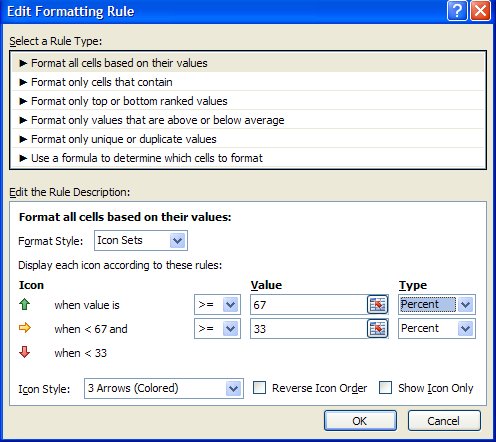Excel Ms Microsoft Conditional Formatting 2007
Excel 2. 01. 3: Conditional Formatting - You. Tube. It would be extremely difficult to see patterns and trends just from examining the raw information. Similar to charts and sparklines, conditional formatting provides another way to visualize data and make worksheets easier to understand. If you are interested in learning more about this topic, please visit our site at http: //www. It includes instructional text, informational graphics, examples, and even interactives for you to practice and apply what you've learned.
- This is a full and free computer course for Microsoft Excel 2007 to 2016. If you're not sure whether or not you're in the right place take a look at.
- Use Excel conditional formatting to color rows, hide duplicates, highlight items or hide errors.
- Excel Conditional Formatting. Conditional formatting in Excel allows you to highlight cells whose data satisfies certain criteria. For example, you might want to.
One of our readers emailed this question recently, I like the conditional formatting icons. I am trying to present some business data where going down is good.
Here's how to Use formulas to customize conditional formatting rules in Excel. This tutorial uses a date formula and conditional formatting to highlight past due dates. Car Parking Game For Java Free Download. It would be extremely difficult to see patterns and.
Conditional formatting in Excel enables you to highlight cells with a certain color, depending on the cell's value. Excel 2007 is the spreadsheet application in the Microsoft Office 2007 suite. Get help organizing and calculating data in this Excel 2007 tutorial. Formatting cells in Excel is similar to the way it is done in Microsoft Word: First select the range, then click the appropriate formatting button.

How to Apply Conditional Formatting in Excel (with Pictures)1. Input all of your data.
This is useful because conditional formatting is best understood by testing it on data you already have. While you can apply conditional formatting to empty cells, it is easiest to see if the formatting works by using pre- existing data. Conditional formatting allows you to change font style, underline, and color. Using conditional formatting, you can also apply strike- through as well as borders and shading to the cells.
However, you cannot change the font or the font size of the contents in the cell. In Excel 2. 00. 7 this can be found under . For this example, two conditions are used to see how each one plays off the other. Excel allows up to three conditions per cell.
If you need only one condition, skip the next step. If it is based on other cells, change the first drop- down to “Formula Is. For “Cell Value Is. For conditions between a low setting and a high setting, select “between.
This example will use a single value using the “greater than. For this example, we are using the “greater than.
To select a cell, click the button in the text field. This will minimize the conditional formatting box. For “Formula Is. After selecting “Formula Is. This means you can type in any formula you want using Excel’s formulas.
For the most part, you want to stick to simple formulas and avoid text or text strings. Keep in mind that the formula is based on the current cell. For an example, think like this: C5 (current cell) = B5> =B6. This means that C5 will change formatting when B5 is greater than or equal to B6. This example can actually be used in “Cell Value Is.
To select a cell in the worksheet, click the button in the text field. This will minimize the conditional formatting box.
Try this: (1) Highlight your entire table of data, (2) Select conditional formatting as explained above, (3) Select . Note that you want the dollar sign in front of the A but not in front of the 3. You will notice that it automatically places dollar signs ($) before the row and column designations.
This makes that cell reference non- transferable. This means if you were to apply the same conditional formatting to other cells through copy/paste, they will all reference the original cell. To turn this off, simply click in the text field and delete the dollar signs. If you do not want to set a condition using a cell in your sheet, simply type the value into the text field. You can even enter text, depending on the arguments.
For example, don’t use “greater than. You can’t be greater than John Smith.. In this example, the whole condition, if you were going to say it out loud, would read something like this: “When this cell’s value is greater than the value in cell B5, then.. Keep in mind that you want to offset the cell from the rest of the sheet, especially if you have lots of data. But you also want to make it look professional. For this example, we want the font to become bold and white and the shading to become red. To begin, click “Format..
Then click “Border. This example does not make border changes. Then click “Patterns. At whatever point you are finished making the formatting changes, click .
Make changes as needed until the formatting appears the way you would like. You will notice in the example that the second condition also includes a small formula (=B5*. This takes the value of B5, multiplies it by 0. One of two things will happen. No changes will appear. This means that the conditions are not met, so no formatting was applied. One of the formats you selected appears because one of the conditions has been met.